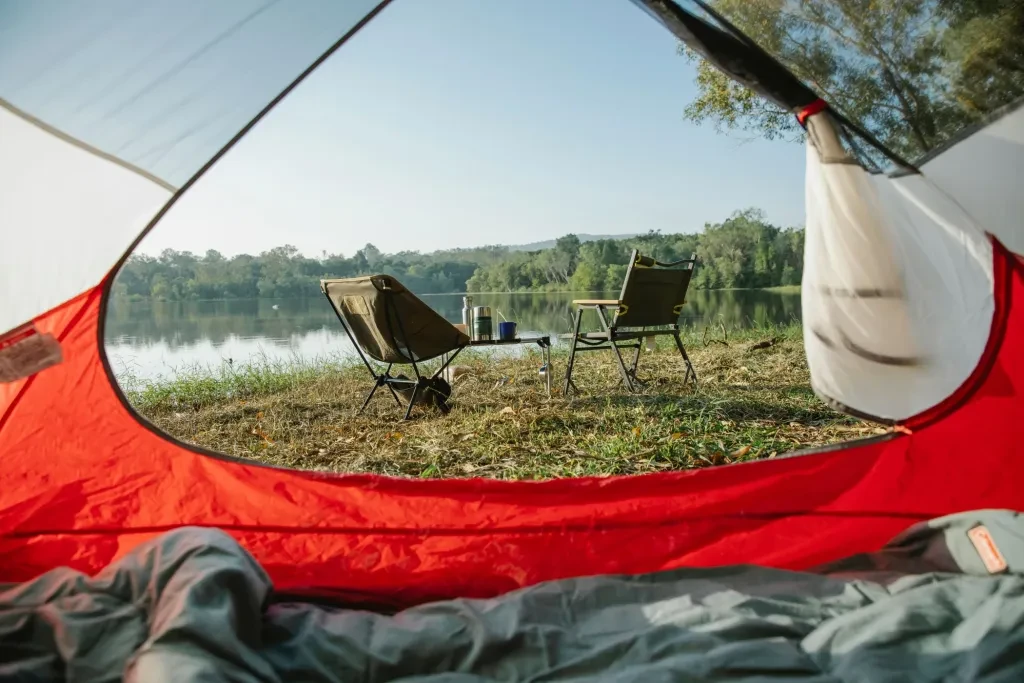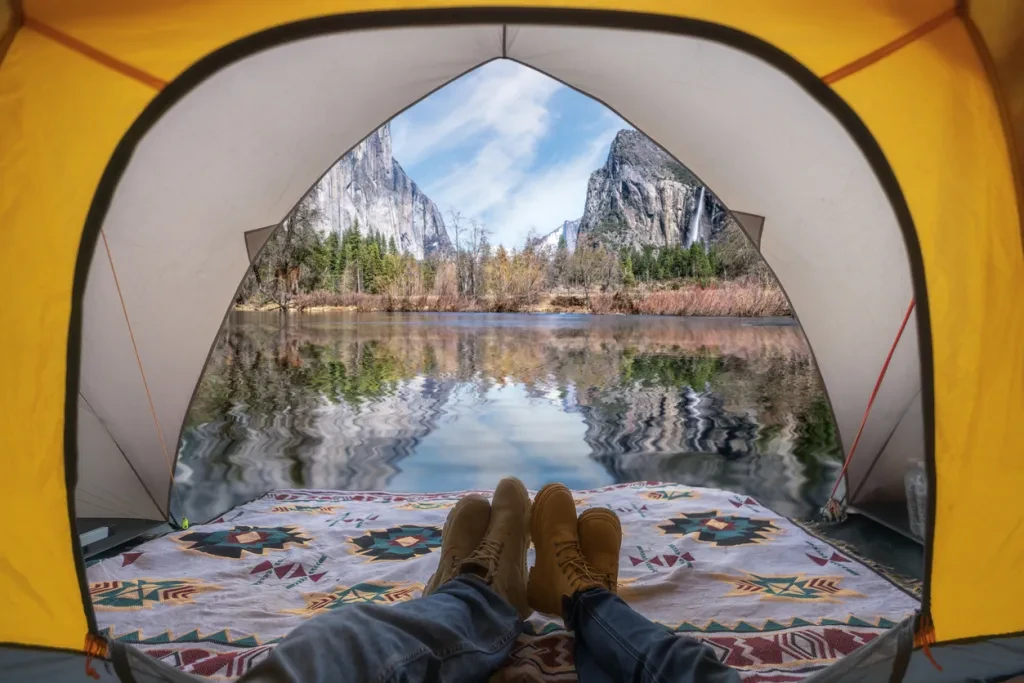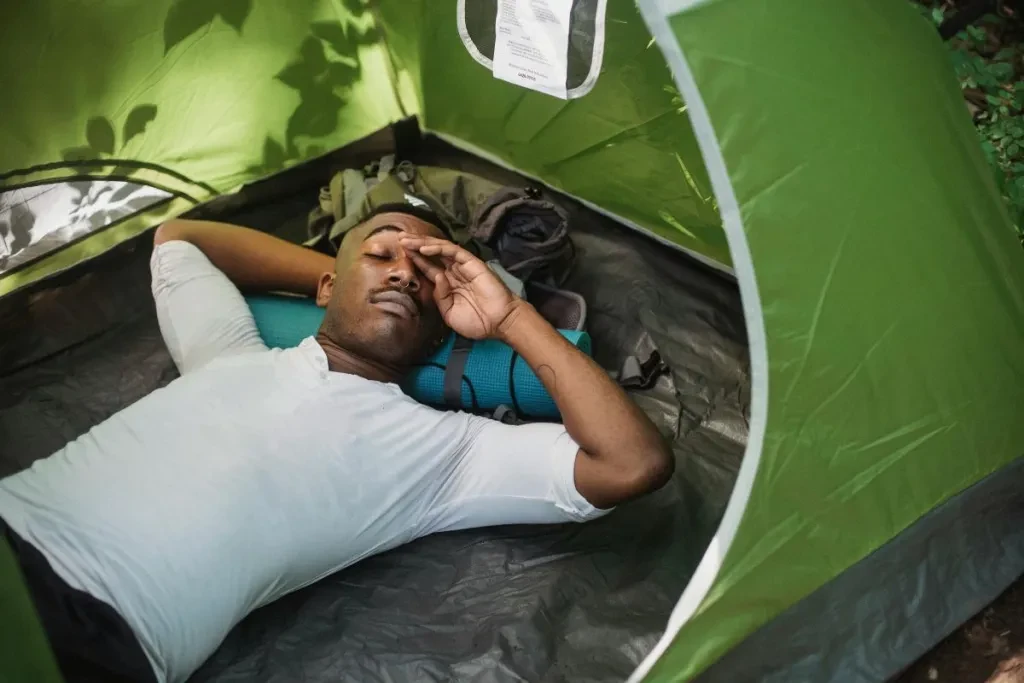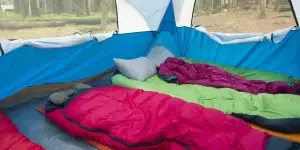The camping sleeping pads market is experiencing significant growth, driven by the increasing popularity of outdoor activities and the demand for comfortable and convenient camping gear. This article delves into the market overview, highlighting the growing demand for outdoor activities, key players in the market, and regional market trends and preferences.
Table of Contents:
Market Overview
Innovative Materials and Designs
Comfort and Convenience
Durability and Weather Resistance
Conclusion
Market Overview

Growing Demand for Outdoor Activities
The camping market in the United States is projected to witness a significant growth in revenue, with an estimated value of US$25.81 billion in 2024, according to Statista. This growth is driven by the increasing popularity of outdoor activities among millennials seeking budget-friendly adventures. The market is expected to grow at an annual rate of 6.11% (CAGR 2024-2029), resulting in a projected market volume of US$34.72 billion by 2029. The number of users in this market is expected to reach 80.88 million by 2029, with user penetration rising from 18.5% in 2024 to 23.1% by 2029.
Key Players in the Camping Sleeping Pads Market
The camping sleeping pads market is highly competitive, with several key players dominating the industry. Companies such as Therm-a-Rest, Sea to Summit, and Exped are leading the market with their innovative and high-quality products. These companies are continuously investing in research and development to introduce new materials and designs that enhance the comfort and convenience of camping sleeping pads. Additionally, brands like Big Agnes and NEMO Equipment are gaining popularity for their eco-friendly and sustainable products, catering to the growing demand for environmentally conscious camping gear.
Regional Market Trends and Preferences
The United States is expected to generate the highest revenue in the camping market, with an estimated value of US$25.81 billion in 2024, as reported by Statista. This is attributed to the country’s diverse range of camping opportunities, from national parks to private campgrounds, catering to a wide variety of preferences and budgets. The strong economy and high levels of disposable income in the United States have also contributed to the growth of the camping market, as consumers are increasingly willing to invest in outdoor experiences and high-quality camping gear.
In Europe, the camping market is witnessing a rising popularity of glamping, which offers a luxurious camping experience with high-end amenities and accommodations. This trend is reshaping the camping market in the region, attracting a new segment of customers looking for comfort and nature immersion. Additionally, the Asia-Pacific region is experiencing a surge in outdoor recreational activities, boosting the camping market growth. Countries like Australia and New Zealand are known for their stunning natural landscapes, driving domestic and international camping tourism.
The global rise in disposable income levels is enabling more people to invest in camping gear and equipment, fueling market growth. The impact of the COVID-19 pandemic has also led to a surge in domestic tourism and outdoor activities, as people seek safe and socially distanced vacation options. This shift in travel behavior has positively influenced the camping market worldwide, with more individuals and families opting for camping as a preferred holiday choice.
Innovative Materials and Designs

Lightweight and Compact Options
In the realm of camping sleeping pads, the trend towards lightweight and compact designs is more prominent than ever. Modern campers and backpackers prioritize gear that is easy to carry without compromising on comfort and functionality. For instance, the Sea to Summit Aeros Ultralight pillow, which is highly regarded for its compactness and lightweight nature, exemplifies this trend. Similarly, sleeping pads that can be rolled or folded into small packages are becoming increasingly popular, allowing adventurers to maximize their pack space for other essential gear.
Eco-Friendly and Sustainable Materials
Sustainability is a growing concern in the outdoor gear industry, and camping sleeping pads are no exception. Many brands are now incorporating eco-friendly materials into their products to reduce environmental impact. The “Best Camping Blankets of 2024” report highlights the use of recycled materials, such as the Nomadix Festival Blanket, which is made from 58 recycled plastic bottles. This trend is mirrored in the sleeping pad market, where manufacturers are using recycled polyester and other sustainable materials to create high-performance, environmentally responsible products. For example, the REI Trailmade Mummy Bag Pillow utilizes recycled polyester and excess foam from REI’s self-inflating sleeping pads, showcasing a commitment to sustainability without sacrificing comfort or durability.
Advanced Insulation Technologies
Insulation is a critical factor in the performance of camping sleeping pads, especially in colder conditions. Advanced insulation technologies are being developed to enhance warmth and comfort. According to the “Best Ultralight Sleeping Bags and Quilts of 2024” report, the R-value of a sleeping pad is a key indicator of its insulative properties. For three-season use, a pad with an R-value of at least 3 to 4 is recommended, such as the Therm-a-Rest NeoAir XLite NXT, which boasts an R-value of 4.5. These advancements in insulation technology ensure that campers stay warm and comfortable, even in challenging weather conditions.
Comfort and Convenience

Ergonomic Designs for Better Sleep
Comfort is paramount when it comes to camping sleeping pads, and ergonomic designs are at the forefront of this consideration. The “Best Camping and Backpacking Pillows of 2024” report emphasizes the importance of ergonomic shapes that conform to the body, providing better support and reducing pressure points. For instance, the Hest Camp Pillow, with its memory foam construction, offers excellent support and cushioning, making it a favorite among comfort-focused campers. Similarly, sleeping pads with contoured designs that align with the natural curves of the body can significantly enhance sleep quality, ensuring a restful night under the stars.
Easy Inflation and Deflation Mechanisms
Convenience is another critical aspect of modern camping sleeping pads. Easy inflation and deflation mechanisms are essential for quick setup and pack-up, allowing campers to spend more time enjoying their outdoor adventures. Inflatable designs like the Nemo Fillo Elite Luxury pillow are praised for their user-friendly inflation systems. These mechanisms often include integrated pumps or valves that make inflating and deflating the pad a breeze, even after a long day of hiking. This ease of use is a significant advantage, particularly for those who frequently move campsites.
Multi-Functional Features
Multi-functional features are becoming increasingly common in camping sleeping pads, adding versatility and value to these essential pieces of gear. The “Best Camping Blankets of 2024” report highlights products like the Yeti Lowlands Blanket, which offers both ground protection and insulation, making it suitable for a variety of activities beyond camping, such as concerts and tailgates. Similarly, sleeping pads with integrated features like stash pockets, straps for securing the pad, or even built-in pillows can enhance the overall camping experience by providing additional functionality and convenience.
Durability and Weather Resistance

High-Quality Construction for Longevity
Durability is a crucial factor for camping sleeping pads, as they need to withstand the rigors of outdoor use. High-quality construction materials and techniques are essential for ensuring longevity. The denier (D) rating of a fabric is a common measure of its durability. Lower-denier fabrics, while lighter, tend to have a shorter lifespan and are more prone to durability issues. In contrast, higher-denier fabrics offer greater resistance to wear and tear, making them ideal for long-term use. Products like the Therm-a-Rest Compressible Pillow, which uses robust materials, exemplify the importance of durability in outdoor gear.
Weather-Resistant Features for All Seasons
Weather resistance is another critical consideration for camping sleeping pads, as they need to perform well in various environmental conditions. Features such as water-resistant coatings, robust seams, and high-quality insulation materials are essential for ensuring that the pad remains functional and comfortable in all seasons. The “Best Camping Blankets of 2024” report mentions the Yeti Lowlands Blanket’s waterproof base, which provides excellent ground protection and insulation, making it suitable for use in damp conditions. Similarly, sleeping pads with weather-resistant features can offer reliable performance, whether you’re camping in the rain, snow, or on dewy grass.
Maintenance and Care Tips
Proper maintenance and care are essential for prolonging the life of camping sleeping pads. Regular cleaning, proper storage, and timely repairs can help maintain the pad’s performance and durability. Many camping pillows come with removable covers for easy cleaning, which is a feature that can also be found in some sleeping pads. Keeping the pad clean and dry, storing it in a cool, dry place, and repairing any punctures or damage promptly can ensure that it remains in good condition for many camping trips to come.
Conclusion
The camping sleeping pad market is evolving with innovative materials, ergonomic designs, and advanced technologies that enhance comfort, convenience, and durability. As sustainability becomes a priority, eco-friendly materials are increasingly being used, while advanced insulation technologies ensure warmth in various conditions. With features that cater to the needs of modern campers, these sleeping pads are set to provide better outdoor experiences. Looking ahead, we can expect further advancements in materials and design, making camping more enjoyable and accessible for everyone.




